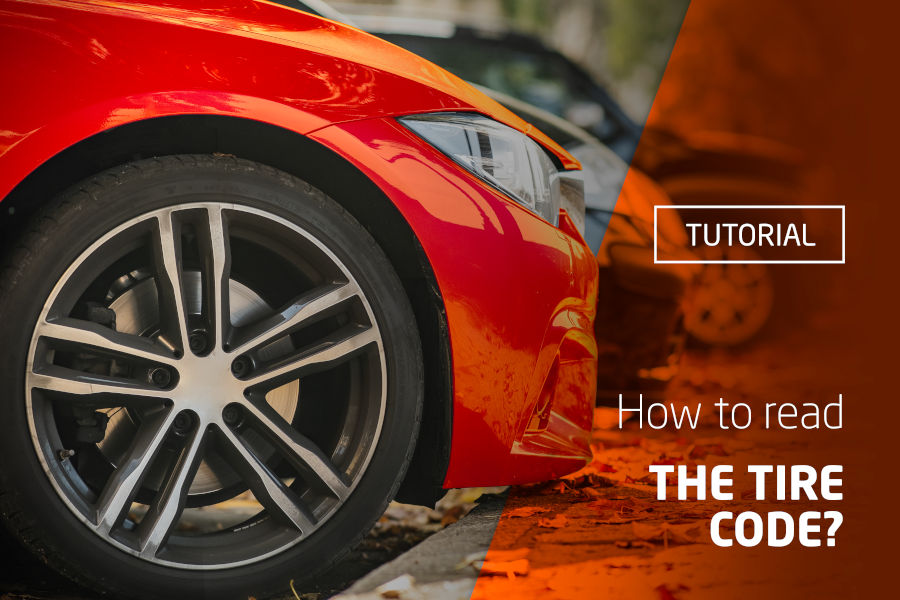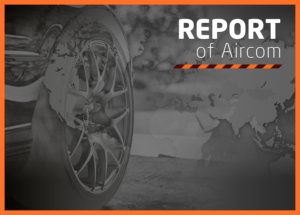Tire Code - how to read it?
Tire purchasing may become a challenge, taking into account markings and symbols of car tires. Knowledge about size and rim dimensions could not be enough if you need to choose between a radial, diagonal, or directional tire option. How to read tire codes? What do the symbols mean? We present a guide that will take all questions about the parameters of car tires.

Car tire size
The first group of markings that you should learn about is the symbols for the tire size. Often they are written in a sequence of consecutive characters, f.eg. 205/55 R16, where:
- 205 – is the width of the tread face expressed in millimeters (the measurement after filling the tire with air),
- 55 – tire profile, i.e. the height of its sidewall,
- R – indicates the radial tire structure,
- 16 – The diameter of the rim in inches on which the tire can be mounted.
Information about tire sizes is available not only on the tires, but also on the driver’s seat pillar, in the car’s manual, and sometimes on the fuel filler flap.

Tire Speed Index
Another important parameter of the tire is the speed rating, denoted by the letters T, H, V, W, or Y. It tells the driver the speed at which the car can be safely driven when it is fully loaded. For example speed index 91T means maximum safe speed 190 km / h, and 91V – 240 km / h. It is worth adding that the speed index is strongly related to the load index.
Tire load index
The load index is marked by the abbreviation LI. It describes the allowable load for a given tire when driving at its maximum speed. The manufacturer always specifies the maximum load allowed by him and therefore it should not be exceeded. When we multiply the load capacity of the tire by the number of wheels in the vehicle, we get the total weight of the vehicle together with the permissible load. For example, a tire load index of 95 means that the load on that tire must not exceed 690 kg.
You should pay attention to the tire load index, especially, when you plan to transport a large and heavy load. If the load exceeds the value specified by the manufacturers, there is a high risk of damage or tire destruction.

Tire fitting markings
Car tires may also have markings relating to the direction and side of their fitting. This rule mainly applies to directional tires, which must be installed following the manufacturer’s instructions. How to read tire fitting markings?
- ROTATION + directional arrow – indicates the correct rolling direction of a directional tire.
- RIGHT – tire to be mounted on the right side of the vehicle.
- LEFT – tire for installation on the left side of the car.
- INSIDE – the side of the tire marked with this symbol should not be visible from the outside after the wheel is fitted,
- OUTSIDE – the side of the tire with this marking should be visible from the outside after the wheel is fitted.
The last two parameters of tires (INSIDE and OUTSIDE) relate to asymmetric tires.
Tire production date - DOT
When analyzing the most important markings of car tires, it is impossible to omit the DOT symbol, which indicates the date of tire production. Immediately after the DOT symbol, there are characters coding: the location of the factory producing the tire, the size code, and the week (month) and year of production. For example, a tire with the DOT 3Y 1520 marking means that it was produced at the Bridgestone factory in Poznań on week 15 of 2020.

Do the tires have an expiry date?
In Poland, the PNC 94300.7 standard is in force, according to which tires can be freely marketed up to 36 months from the date of production. It is worth checking the date of manufacture of tires carefully before purchasing them. This applies both: to the purchase of new and used tires. However, it is difficult to define the maximum limit of safe use. It depends on many factors, such as the type of tire, weather conditions, driving style, or the method of storage and maintenance. However, regardless of the above aspects, it is worth checking the condition of the tires regularly, bearing in mind that old, badly worn tires can pose a serious hazard on the road.





